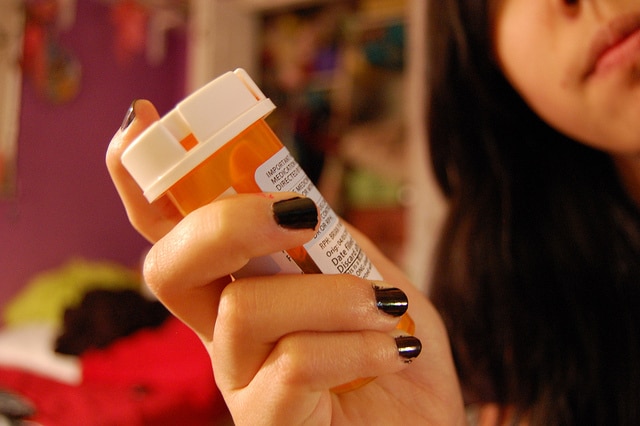
Ketamine’s effects vary depending on the dose. Image Source: Wikimedia via user Psychonaught.
John Lilly started experimenting with ketamine in the early 70’s, just a few years after it was synthesized for use as an anesthetic. But Lilly—a neuroscientist perhaps most famous for inventing the isolation tank and researching sensory deprivation—wasn’t interested in the high doses of ketamine used to cause unconsciousness. Rather, he wanted to see if the psychedelic qualities of ketamine at lower doses—which were starting to become known from patients’ accounts—could help his chronic migraines. Ketamine succeeded where other psychedelics had failed: he was migraine-free for a month and continued to feel benefits from his ketamine experiences for the rest of his life.
This began a decade-long period of self-experimentation with ketamine, the results of which were published in his 1978 autobiography The Scientist. As Lilly found out, ketamine is undoubtedly a unique psychedelic. It has distinct neurological functions that cause qualities similar to a variety of psychedelics and other medicines—it has analgesic effects like opioids, empathogenic qualities like MDMA, can produce ego dissolution like LSD, experiences with extraterrestrial beings like DMT, and can cause you to relive memories like ibogaine or ayahuasca. But these varied effects depend heavily on the dose.
It’s important to note that, while Lilly found that the effects ascertained to certain doses were reliable for him, the effect on a given person depends on a lot of factors, including body type, personality, and set and setting. Still, these results have been backed up by contemporary research, and these thresholds a give an idea of what you can expect at varying doses. Also, remember that this guide is based on ketamine being injected intramuscularly—how you’ll normally find it in a ketamine clinic—but effects may differ if you take ketamine by a different method such as orally, nasally, or sublingually.
Empathogenic Experiences at Low Doses (25-50 mg)
At lower, sub-psychedelic doses (25-50 mg, or 0.25-50 mg/kg), ketamine has strong analgesic and anxiolytic (anti-anxiety) effects without creating a full-blown psychedelic experience. It produces an empathogenic, “heart-opening” state similar to what you might experience on MDMA or low doses of LSD or psilocybin. People report feelings of love, peace, compassion, forgiveness, and a touch of euphoria. This dose is sometimes used for analgesia because it induces a relaxed state and eases pain. While there are still some sedative effects, you remain aware of your body and probably won’t experience the characteristic mind-body disconnect that comes with higher doses—your ego defenses are lowered, but your sense of self is still intact and you won’t lose any motor function. You may have some magnified colorful visualizations, but full-blown visions are not common at low doses.
Whereas higher doses of ketamine may leave you with only half-formed memories of the experience, most people retain complete consciousness at this mild dose and can complete activities like reading a book or drawing. Thanks to the anxiolytic effects, it’s particularly good for relieving chronic anxiety because you still retain some of your faculties. At this dose, you could work with a therapist or clinician doing guided meditations or visualizations, and you could still engage with a therapist to resolve long-standing trauma from abuse, war experiences, familial conflict, or other intrapersonal conflicts.
Out-of-Body Experiences at Medium Doses (75-100 mg)
A medium dose of ketamine (75-100 mg, or 0.75-1 mg/kg) introduces the clinical state known as conscious sedation—in other words, it induces an out-of-body experience while keeping some semblance of ego intact. People experience a complete separation from their body and environment and have vivid visions behind closed eyes, such as visiting mythological realms, meeting non-terrestrial beings or deceased loved ones, re-experiencing birth, and dreams of past and future lives. These visions often arrange themselves in story or narrative form, similar to how an ibogaine experience can cause a “film-reel” experience of memories. You will probably lose motor function at this dose, so it’s important to have a safe set and setting.
Compared to a low dose, which alleviates stress and provides comfort, this dose creates a deeper experience that can bring unresolved problems in your unconsciousness to light and help you process traumatic events. Because receptors in your brain associated with memory are more heavily blocked, you may not remember all the particular details of your experience, but key elements will likely stand out, which you can then delve into with a therapist.
Ego Dissolution Experiences at High Doses (150-200 mg)
A high dose of ketamine (150-200 mg, or 1.5-2.0 mg/kg) can cause complete ego dissolution, “life-in-review” memories, transcendental experiences, and visions, even with the eyes open. This dose, according to a study published in the International Journal of Transpersonal Studies, can manifest in two ways. First, it can cause a loss of identity and provoke feelings similar to a near-death experience: you may feel as though you are experiencing either physical or mental death, relive your life through a narrative of memories, and become more aware of how your actions have affected others. In this state, you remain aware of who you are, but it’s like watching yourself from the outside. In the second possible state, you lose complete sense of self and can feel as though you’ve joined the collective unconscious or a sacred unity with nature or the universe—similar to people’s reports of ayahuasca experiences.
Due to the intense nature of this dose, it may not be the best choice for someone with anxiety (though it could be useful for the right person). But it can be extremely helpful for people suffering from chronic depression and may actually have the most long-lasting benefits of all the dose levels. Because you will probably lose all mobility at this state, it’s critical that you only attempt this under the guidance of a certified clinician and in a safe environment. While intense, a high dose can provide the wake-up call needed to reconnect with your inner self and help you get on the path to a healthy lifestyle.
A Spectrum of Effects for Healing
The acute effects of ketamine typically last 45-60 minutes, but it can have residual positive effects for several days or weeks after the experience. For example, people using ketamine to interrupt a depressive episode often feel the effects most after they’ve returned to sober, daily life. This makes it a promising treatment for a variety of mood disorders because it doesn’t have to be taken continuously, unlike a daily prescription medication.
Because of ketamine’s intense, dissociative qualities, it’s important that you only undergo a ketamine experience in a responsible setting—it’s absolutely not the kind of psychedelic you should take at a party or in an unknown place. If you decide to take ketamine on your own, you should at least have a sitter to make sure you stay safe (Lilly discovered this when he didn’t heed his own advice and almost drowned in a bathtub because he couldn’t move). Ideally, find a ketamine clinic near your hometown where a clinician can help you determine a proper dose, point you toward a therapist that can help you integrate the experience afterward, and assist you in having safe and beneficial experience.









